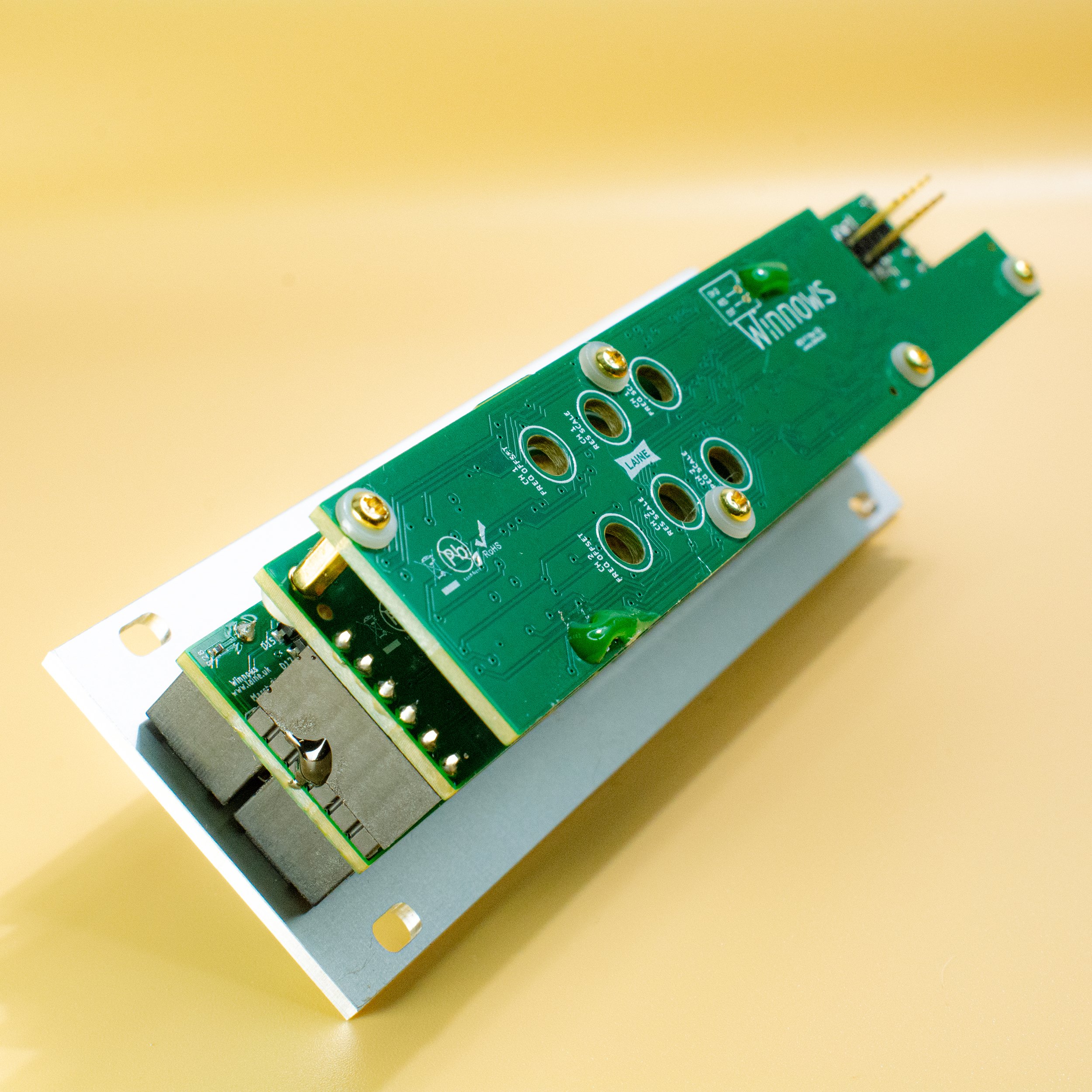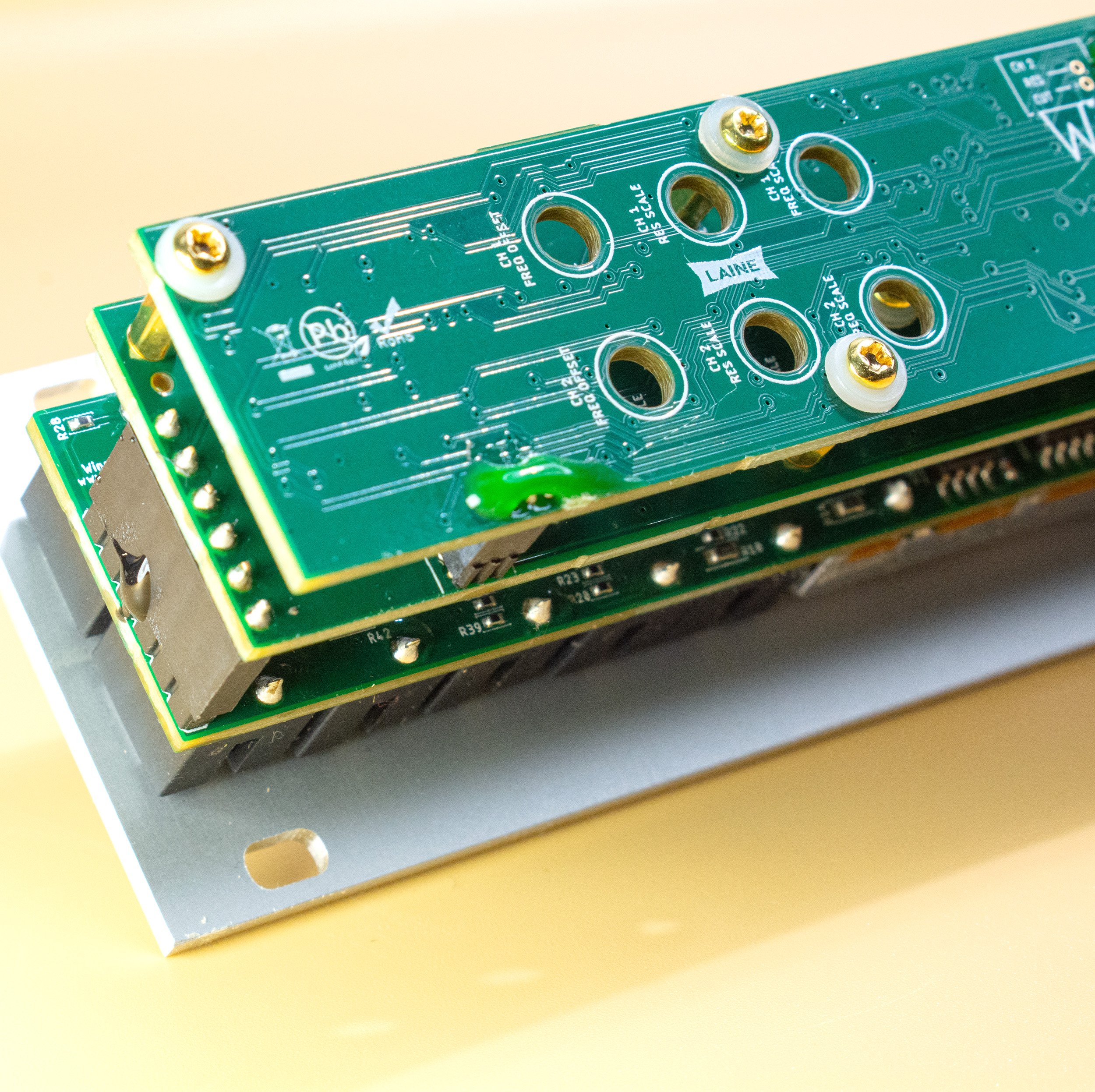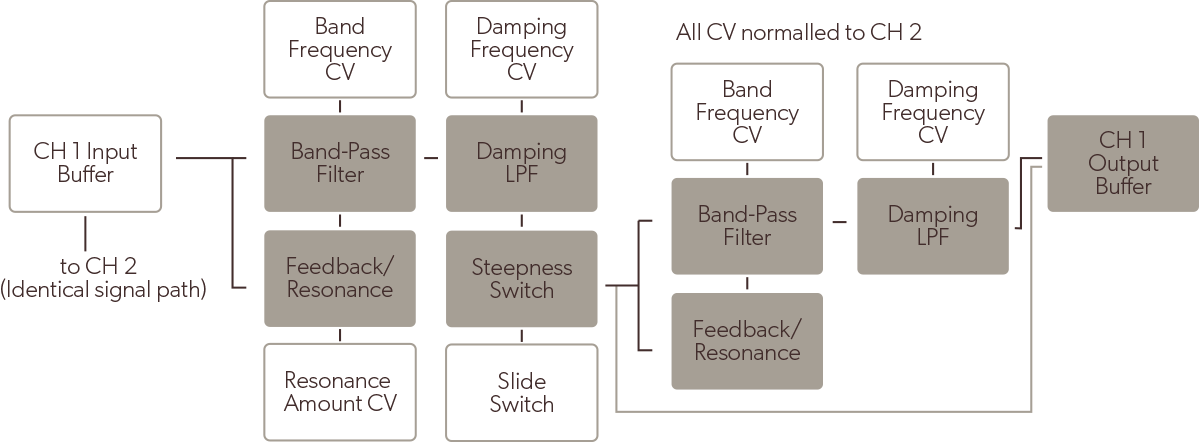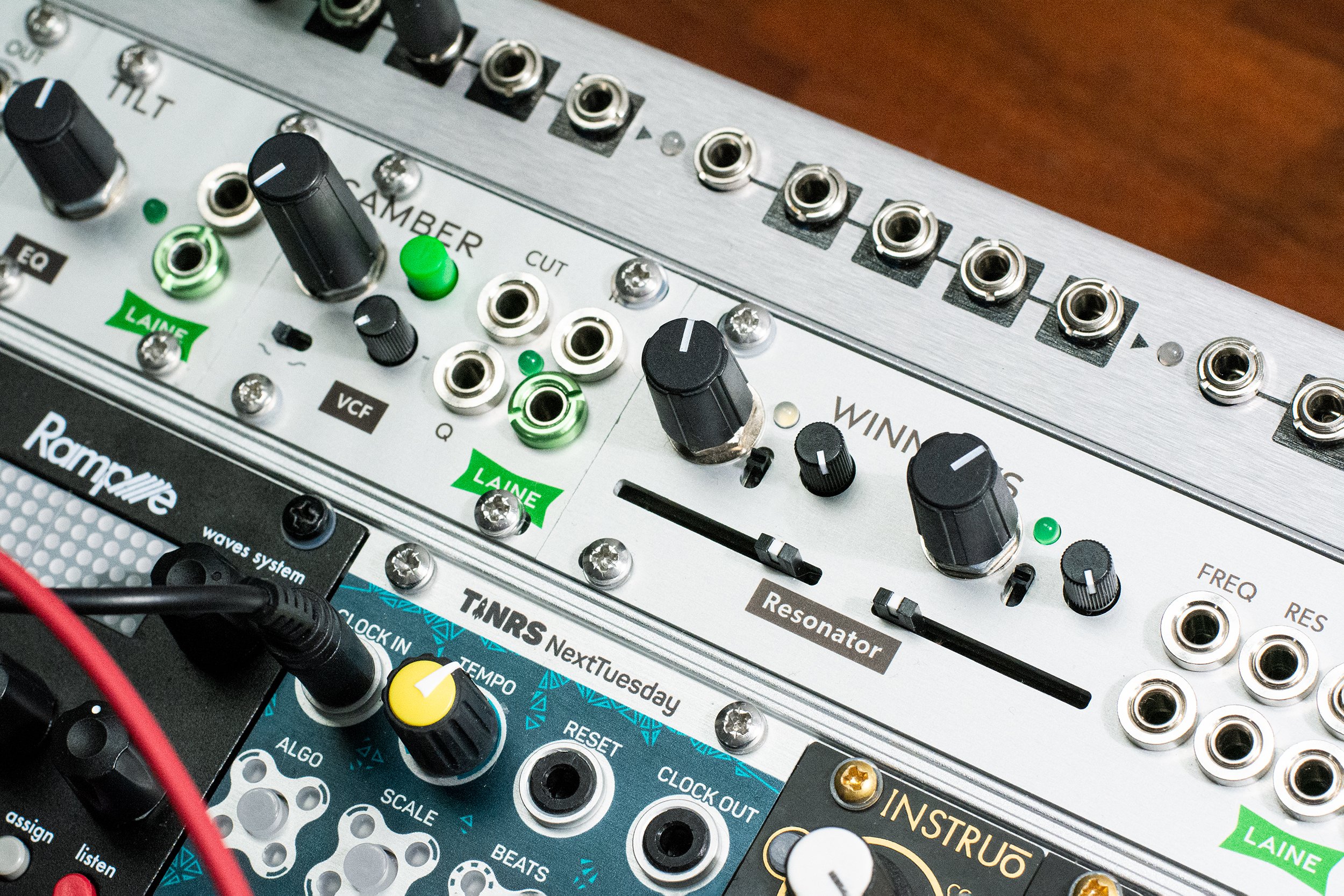Winnows brings radical resonant filtering to the 1U row. Make your basslines growl like it’s 1999. Create clean resonant tones and layers, tuned percussion, steep filtered peaks, vowel filters and more. Each filter channel comprises two state variable filter cores, the first producing a 2-Pole band-pass response, with resonance and self-oscillation amounts set by a 3-Pole feedback network. Signals are then routed through a 1-Pole low-pass damping stage to remove harshness if required. This can be routed to the channel output, or switched and routed through a second series of resonant SVF and 1-Pole LPF damping stages. This circuitry is identical per channel.
Features and uses
• Steep and spiked or wide and smooth, resonant bandpass filters
• Zone in on and reinforce a sound’s dominant frequency, create overtones using both channels
• Create sharp resonant peaks, dull or remove any harshness with VC damping
• Use the resonator as a sound source by shaping and triggering tuned percussion tones or kick drums
• Per channel: 2 x VCA based SVF, 2 x 1-pole damping LPF, 1 x 3-Pole resonance core
• Identical circuitry per channel, CV and audio jacks are normalled between channels
• Combine both channels for vowel filter responses and creative filtering
Specifications and downloads
• Intellijel 1U format
• Width 24 HP
• Depth 34mm
• Power requirements ~85mA +12V/~85mA -12V
• Control voltage range 0-8V
• Impedance Input 100K / Output 1K
Signal Flow Diagram
User Interface
Audio demos
Theses demo recordings were captured with a Focusrite Scarlett 18i8 at 24bit resolution, 44,100 Sample rate. All filter modulation that you hear is performed by the Winnows hardware. No audio sweetening, compression, or other post-processing has been applied after capture. To prepare for streaming, the audio files were dithered to 16bit and encoded to 320 MP3 in Winlame.
Sweeping using the slide control from left to right (low to high frequency range). The original sound is played first, followed by a high resonance frequency sweep. Then once more with the wide band pole routing setting, with a tiny amount of resonance. Between these two settings you can control exactly how much of the original signal is passed through above and below the central frequency set by the horizontal slide potentiometer.
Some percussive tones were created by sending (pinging) gate signals (+5V and above) to the audio inputs, with varying resonance and steepness settings. First a tight kick drum is made with low resonance, then decay increases as more is added. Sending CV to the frequency input adds a melodic element.
White noise bursts are shaped with various decay envelopes and sent to both channels to create some rich sounding percussion timbres. In the last two examples a complex oscilliator tone is added to the source and boosted around the root note with higher resonance settings.








